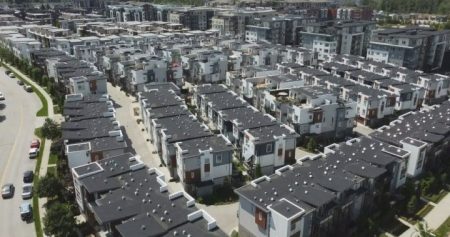Will Robbins, a 43-year-old farmer, is taking over his family farm in Saskatchewan. He grows organic wheat, oats, lentils, peas, and occasionally flax and mustard on 445 hectares of land near Laura, Sask. The price of farmland in west-central Saskatchewan has significantly increased over the years, going from an average of $980 per hectare in 1996 to about $7,410 per hectare last year. This steep increase in land prices has made it challenging for Robbins to expand his farm, especially considering other risks such as climate instability.
Land prices in Saskatchewan have been steadily growing over the past 20 years, with a marked jump in 2011 and continued increases since then. In 2023, the province experienced a 15.7% increase in farmland prices, the highest in Canada that year. On average, a hectare of land sells for $6,670 to $16,060, depending on its location and whether it has irrigation. This rise in prices has made it difficult for younger farmers to expand and compete with larger farms that have continued to grow in size.
Leigh Anderson, an economist with Farm Credit Canada, mentioned that young farmers struggle to compete with well-established farms that have multiple generations of assets to finance the purchase of more land. The strong crop revenues and tight supply have contributed to the increase in land prices over the years. While this presents a challenge for young farmers, older producers looking to sell can benefit from the higher land prices, providing a good return on their life’s work when they retire.
There is speculation about the influence of out-of-province investors on driving up land prices. Large farming corporations buying land have caused values to spike. A report from Re/Max Canada noted the increase in land value due to investors purchasing farmland. André Magnan, a University of Regina professor, reported in 2018 that 343,980 hectares are owned by large institutions that are not family-operated. This influx of investors in the market has contributed to the rise in land prices in Saskatchewan.
To address the challenge of high land prices, young farmers can consider renting land, but the rental market is also tight. Setting up purchasing agreements with older farmers can allow them to eventually take over an operation. Suggestions have been made for the government to implement tax changes that encourage retiring farmers to sell land to locals, promoting community growth and support for local businesses. Robbins expressed concern that current land prices may not be worth the value of crops produced, as some farmers are purchasing land as a means of stability rather than a capital investment.
Overall, the increase in land prices in Saskatchewan has created both challenges and opportunities for farmers. While it has made it difficult for younger producers to expand, it has provided a financial leverage for older producers looking to sell. The influx of out-of-province investors and the tight land rental market have further complicated the situation. Finding ways to address these challenges, such as implementing tax changes and purchasing agreements, can help farmers navigate the changing landscape of the agricultural industry in Saskatchewan.















